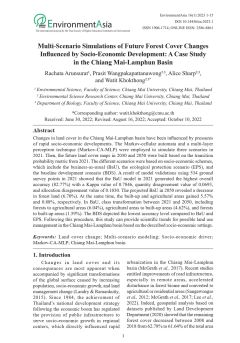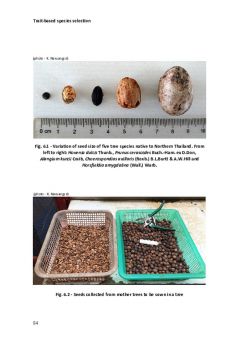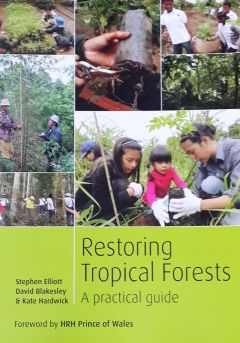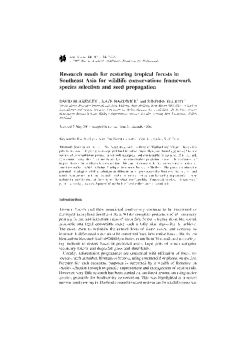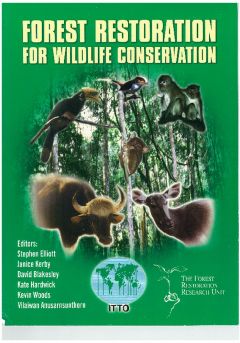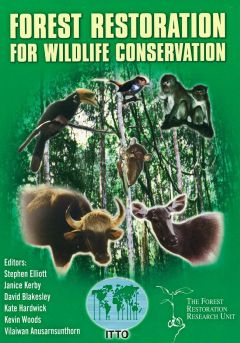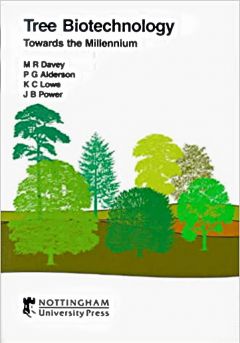Publications
1: Multi-Scenario Simulations of Future Forest Cover Changes Influenced by Socio-Economic Development: A Case Study in the Chiang Mai-Lamphun Basin
Abstract: Changes in land cover in the Chiang Mai-Lamphun basin have been influenced by pressures of rapid socio-economic developments. The Markov-cellular automata and a multi-layer perceptron...
2: A trait-based approach for selecting tree species for aerial seeding
ABSTRACT: We review recent ecological research on functional traits that can aid selection of tree species for restoration by aerial seeding. A major barrier in selecting species for restoration...
3: Restoring Tropical Forests: a Practical Guide
Available in English, Spanish and French The authors at a publishers' meeting, Kew 2012Restoring Tropical Forests is a hands-on guide to restoring degraded tropical forest ecosystems. Based...
4: Research needs for restoring tropical forests in Southeast Asia for wildlife conservation: framework species selection and seed propagation
ABSTRACT: Some governments in Southeast Asia, such as those of Thailand and Vietnam, have clear policies to restore large areas of degraded land to native forest. However, knowledge needed for the...
5: Forest Restoration for Wildlife Conservation
In 2000, there was little interest in restoring tropical forest ecosystems as wildlife habitat. The need was to consolidate the concept and to identify how scientific research might contribute...
6: The Chiang Mai Research Agenda for the Restoration of Degraded Forestlands for Wildlife Conservation in Southeast Asia
Back in 2000, forest restoration research was far from main stream. Deforestation was regarded as irreversible and the idea that ecologists could actually find a way to restore tropical forest...
7: The establishment and survival of native trees on degraded hillsides in Hong Kong
ABSTRACT: Deforestation and land degradation in the tropics and subtropics are proceeding at an unprecedented rate, threatening a massive loss in global biodiversity, comprising a fifth of the...
8: Low technology tree propagation and the restoration of natural forest ecosystems
ABSTRACT: Loss of forests, and their associated biodiversity, is a serious issue in many developing tropical countries. Throughout northern Thailand for example, large areas within national parks...
9: Forest restoration research in conservation areas in northern Thailand
Loss of forests and their associated biodiversity is a serious issue in many tropical countries. In Thailand, for example, forest cover has been reduced from about 53% in the early 1960s...
-
- 10: 9
- 11: 6
- 12: 6
- 34: 5
- 15: 4
- 13: 3
- 14: 3
- 33: 3
- 35: 3
- 37: 3
- 36: 2
- 39: 2
- 41: 2
- 40: 1
-
- 28: 2
- 42: 2
- 46: 2
- 47: 2
- 19: 1
-
- 21: 9
- 48: 4

